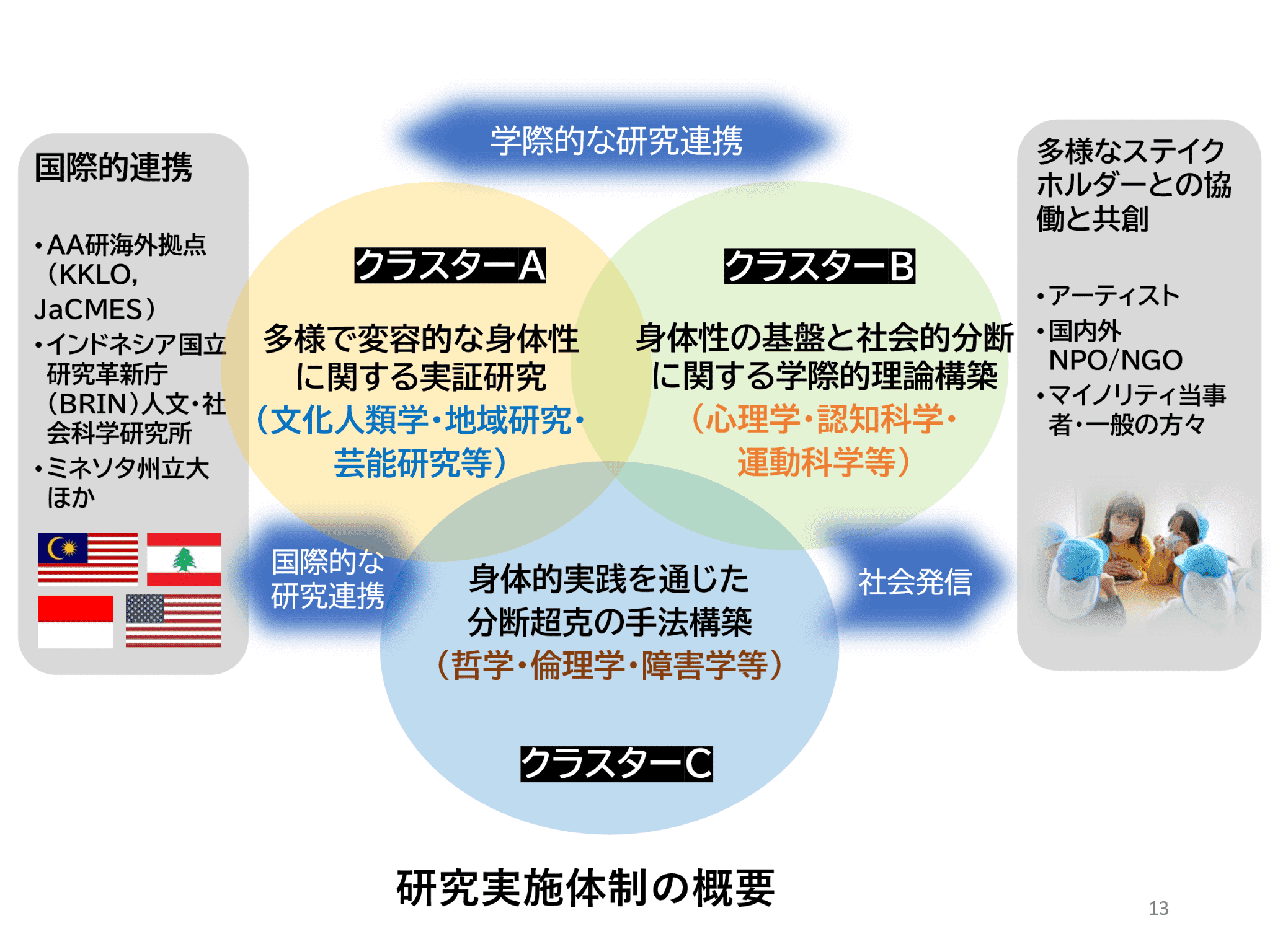Research Summary and Objectives
In recent years, globalization has accelerated the movement of people, goods, and culture across borders, leading to increased friction and conflict. Discrimination against immigrants is a typical reaction.Additionally, as society becomes more complex, discrimination based on gender, ethnicity, social class, and disability has become more pronounced. The COVID-19 pandemic formed a backdrop for new forms of prejudice, such as the rise in hate crimes against Asian residents in Europe, the United States, and other regions.
Previous studies addressing division and discrimination have focused on each country’s national macro-economic structures, institutions, and policies. However, it’s also crucial to examine the micro perspective, looking at the daily lives of individuals experiencing and responding to division and discrimination. An often overlooked but significant aspect is the role of the body (corporeality), shared by all despite its diversity. Recent pioneering research highlights the importance of local bodily experiences in understanding social divisions and discrimination in particular.


In cognitive science, there is a growing focus on "bodily cognition," which asserts that human cognitive processes are not merely information-processing, but result from interactions between the environment and the body. In psychology and philosophy, particularly in research on latent bias and the "phenomenology of race," it is noted that pre-linguistic perceptions and unconscious physical responses to others' attributes, such as skin color, play a significant role in racism. Similarly, the physical dimension, including facial and bodily appearance, is crucial in discrimination against LGBTQ individuals, gender minorities, and people with disabilities, as well as in issues of "lookism."
Furthermore, since the COVID-19 pandemic, differing opinions and values about physicality, such as mask-wearing, have led to new social divisions worldwide.


This research aims to conduct interdisciplinary studies in the humanities and social sciences, focusing on diverse physical practices worldwide. It will explore not only explicit and verbalized aspects but also implicit cognitive processes and physical responses. Challenging the universalist (often Western-centric) view that local physicality is a minor issue in the social sphere, this study seeks to address and overcome these biases with a physicality-focused approach to overcome social divisions.One main objective is to offer academic and practical perspectives to overcome social divisions and achieve true diversity. This includes engaging in "philosophical dialogue" to develop perspectives that transcend social divisions and conducting outreach activities like workshops involving dance, theater, and body work. Methods for these activities will also be developed.
The project secretariat will be based at the Research Institute for Languages and Cultures of Asia and Africa (ILCAA) at Tokyo University of Foreign Studies (TUFS). It will run alongside the ILCAA Core Project, "Anthropological Inquiry of Sociality: Dynamics of Tolerance/Intolerance in Transcultural Contexts," in close collaboration with the Kota Kinabalu Liaison Office (KKLO) , an overseas ILCAA affiliate.


Research Contents and Methods
To challenge the bias of body neglect and the universalist view originating in the modern West, this study aims to develop a "diverse and transformative paradigm of the body" that acknowledges the varied physicality of each region. This new paradigm seeks to move beyond the static, universalist perspective and examine the body through the lenses of "diversity" and "transformation."
The study is organized into three research clusters based on broad sub-themes and methods:
- Cluster A: Empirical Research on Diverse and Transformative Embodiment
- Cluster B: Interdisciplinary Theory Building on the Foundations of Embodiment and Social Fragmentation
- Cluster C: Method Building to Transcend Division through Physical Practice
Researchers will join one of these clusters, each focusing on different aspects of the comprehensive study of the body.

Cluster A, led by experts in anthropology, area studies, and field experimental psychology, will examine the diversity of physical practices across various social and cultural contexts worldwide. This cluster will provide empirical data to help construct diverse and generative paradigms about the body.
Cluster B will include humanities specialists in psychology and collaborate with natural science researchers in fields like exercise science and cognitive science. This cluster aims to develop an interdisciplinary theory of social disjuncture and its micro-physical basis.
Using insights from the "diverse and generative paradigms of the body" developed in the other Clusters, Cluster C will actively “co-create” methodologies to overcome social divisions. These will be shared through outreach activities such as workshops and philosophical dialogues.
For details of participating members, please refer to the “Members” page.


